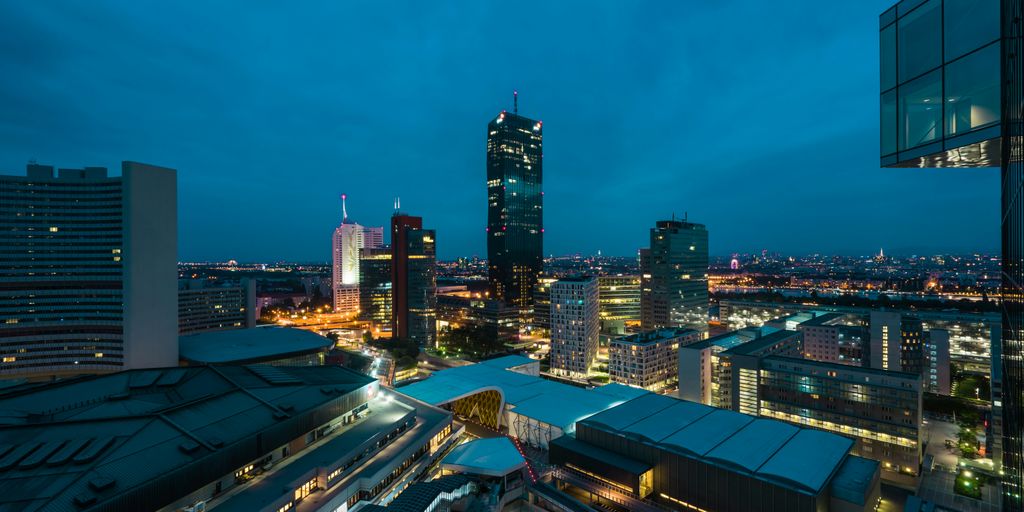
Skyscrapers have become iconic symbols of urban life, representing not just architectural prowess but also the spirit of innovation. From their humble beginnings in the late 19th century to the towering giants we see today, the evolution of skyscrapers reflects changes in technology, design, and societal needs. This article explores the fascinating journey of skyscrapers, highlighting key developments and iconic structures that have shaped our skylines.
Key Takeaways
- The first skyscraper, the Home Insurance Building, was built in Chicago in 1885, marking the start of vertical architecture.
- Elevators and steel frame construction were crucial in allowing buildings to reach new heights.
- Iconic skyscrapers like the Empire State Building and Burj Khalifa showcase the evolution of design and engineering.
- The mid-20th century saw a move towards minimalist designs with the International Style influencing skyscraper aesthetics.
- Modern skyscrapers are increasingly focused on sustainability, incorporating green technologies and energy-efficient systems.
The Birth of the Skyscraper: A Historical Overview

Skyscrapers! They’re not just buildings; they’re like, monuments to how far we’ve come. The story of how these giants came to be is all about pushing limits and dreaming big. Architects, engineers, and city planners were all trying to build higher, better, and prettier. Let’s take a look at how it all started.
The Early Days: Rise of the Skyscraper
So, the word "skyscraper" has a funny history. It started out meaning the really tall masts on sailing ships. Then, in the late 1800s, cities started growing up, and the name stuck to buildings instead. It was a total game-changer for city skylines.
- Cities needed more space, fast.
- New building techniques were emerging.
- Architects were eager to experiment.
The Impact of Steel Frame Construction
The Home Insurance Building in Chicago, finished in 1885, is usually called the first skyscraper. It was only ten stories tall, but it used a steel frame. That was a big deal because before that, buildings were made of brick or stone, which couldn’t go as high. steel skeleton frame changed everything.
Steel framing allowed for taller, lighter structures. This innovation paved the way for the skyscraper boom.
The Role of Elevators in Skyscraper Development
Let’s be real, what’s the point of a super tall building if you can’t get to the top? Elevators were just as important as steel. They made it practical to live and work way up high. Without them, skyscrapers would just be really tall, empty shells. The invention of safe and efficient elevators really opened up the possibilities for vertical expansion.
Architectural Marvels: Iconic Skyscrapers Through Time

Skyscrapers really define city skylines, each one showing off different architectural styles and how far technology has come. Let’s check out some of the most famous ones.
Empire State Building: A Symbol of New York
The Empire State Building is more than just a building; it’s a cultural icon. Completed in 1931, it stood as the world’s tallest building for nearly 40 years. Its Art Deco design is instantly recognizable. It’s a must-see for tourists and a symbol of New York’s ambition. It really shows how skyscrapers became symbols of progress.
Willis Tower: Innovation in Design
Formerly known as the Sears Tower, the Willis Tower in Chicago was completed in 1973. It held the title of the world’s tallest building for 25 years. Its bundled-tube design was a game-changer. This design allowed it to reach impressive heights. The innovative architecture made it a standout structure.
Burj Khalifa: The Pinnacle of Modern Engineering
The Burj Khalifa in Dubai is the current record holder for the world’s tallest building. Soaring to a staggering 2,717 feet, it’s a true feat of engineering.
Here are some facts about the Burj Khalifa:
- It has a mixed-use design, including residences, offices, and a hotel.
- The building’s design was inspired by the Hymenocallis flower.
- It represents Dubai’s rapid development and ambition.
The Burj Khalifa is a symbol of modern engineering and architectural innovation. Its construction pushed the boundaries of what’s possible in skyscraper design.
It’s a testament to human ingenuity and the desire to reach new heights.
The Mid-Century Revolution: Glass, Steel, and International Style
The Shift to Minimalism in Skyscraper Design
Okay, so picture this: after all the fancy Art Deco stuff, skyscraper design took a hard left turn. The mid-20th century was all about minimalism. Architects started ditching the frills and embracing clean lines. It’s like they Marie Kondo’d the buildings – if it didn’t spark joy (or serve a purpose), it was gone. This wasn’t just about looks; it was a whole new way of thinking about what a building should be.
Influence of the International Style
The International Style? Huge deal. It wasn’t just a trend; it was a whole movement. Think glass, steel, and simple shapes. The idea was to create buildings that were functional and modern, reflecting the times. No more unnecessary ornamentation, just pure, unadulterated form. This style wasn’t just for skyscrapers, either. It influenced everything from houses to furniture. It really changed how people thought about design. The style was all about:
- Functionality
- Simplicity
- Modernity
The International Style really pushed the boundaries of what a building could be. It was about using new materials and technologies to create something that was both beautiful and practical. It was a bold statement about the future.
Key Examples of Mid-Century Skyscrapers
Let’s talk specifics. The Seagram Building in NYC? Total game-changer. And the Lever House? Another icon. These buildings weren’t just tall; they were statements. They showed off what glass and steel could do, and they helped define the look of modern cities. They were sleek, efficient, and totally different from anything that had come before. They really set the standard for what a modern skyscraper should be. The style was so influential that it spread across the globe. Architects everywhere started adopting its principles, creating a new, international look for cities around the world.
Towards the Sky: The Age of Megatall Structures
Skyscrapers just kept getting taller. It’s like everyone was competing to see who could build the highest. The late 20th and early 21st centuries saw some crazy tall buildings pop up.
Record-Breaking Heights: A New Era
The race to build the tallest structure really took off. We went from skyscrapers to megatall structures, which is a whole different level. Buildings like the Petronas Towers, Taipei 101, and the Burj Khalifa didn’t just break records; they shattered them. It was a wild time for architecture.
Engineering Challenges of Megatall Skyscrapers
Building super tall isn’t easy. You’ve got to think about things like wind, how to get people up and down quickly, and making sure the whole thing doesn’t fall over. They started using tuned mass dampers to deal with swaying. It’s pretty cool stuff.
Globalization of Skyscraper Construction
Skyscrapers aren’t just in the US anymore. You see them all over the world now. It shows how building technology has spread, and how different countries want to show off their economic power. It’s a global phenomenon.
Building these megatall structures isn’t just about height; it’s about pushing the limits of what’s possible. It requires new ideas, materials, and ways of thinking about construction. It’s a constant learning process.
Sustainability and the Green Skyscraper Movement
Environmental concerns are now front and center, and skyscrapers are no exception. The push for green skyscrapers is gaining momentum, focusing on reducing the environmental footprint of these massive structures. It’s not just about being trendy; it’s about making a real difference.
Energy Efficiency in Modern Skyscrapers
Modern skyscrapers are incorporating a bunch of energy-efficient features. Think better insulation, smart lighting systems, and high-performance windows. The goal is to minimize energy consumption and reduce reliance on fossil fuels.
Innovative Technologies for Sustainability
New technologies are playing a big role in making skyscrapers greener. We’re talking about stuff like:
- Solar panels integrated into the building’s facade.
- Rainwater harvesting systems for non-potable uses.
- Geothermal energy for heating and cooling.
- Smart building management systems that optimize energy use in real-time.
These innovations are helping to create sustainable buildings that are both efficient and environmentally friendly.
Examples of Green Skyscrapers
Several skyscrapers are leading the way in sustainability. One Bryant Park, also known as the Bank of America Tower, is a prime example. It incorporates rainwater harvesting and energy-efficient HVAC systems. These buildings show that it’s possible to build tall and still be kind to the planet.
Green skyscrapers aren’t just about reducing environmental impact; they’re also about creating healthier and more comfortable spaces for the people who live and work in them. It’s a win-win situation for everyone involved.
The Future of Skyscrapers: Vertical Cities and Beyond
Skyscrapers aren’t just about height anymore; they’re evolving into complex, self-contained ecosystems. The future envisions them as vertical cities, integrating living, working, and recreational spaces. It’s a bold vision, pushing the limits of what’s structurally and technologically possible.
Concept of Self-Sustaining Skyscrapers
Imagine skyscrapers that generate their own power, recycle their own water, and even produce food. That’s the goal of self-sustaining skyscraper design. These buildings aim to minimize their environmental footprint and reduce reliance on external resources. Self-sustaining design incorporates:
- On-site renewable energy generation (solar, wind).
- Advanced water recycling systems.
- Vertical farming and hydroponics.
- Waste-to-energy conversion.
The shift towards self-sufficiency is driven by a growing awareness of environmental issues and the need for more resilient urban infrastructure. These buildings are not just structures; they are living systems.
Advancements in Building Materials
New materials are crucial for building taller, stronger, and more sustainable skyscrapers. We’re talking about stuff like:
- Carbon fiber composites: Lighter and stronger than steel.
- Self-healing concrete: Reduces maintenance and extends lifespan.
- Aerogels: Super insulation for energy efficiency.
These materials allow for more innovative designs and can significantly reduce the environmental impact of construction. It’s not just about going up; it’s about building smarter.
Integration of Smart Technologies
Smart tech is transforming how skyscrapers operate. Think of it as giving buildings a brain. This includes:
- AI-powered energy management systems.
- Smart elevators that optimize traffic flow.
- Predictive maintenance systems that prevent failures.
- Occupancy sensors that adjust lighting and HVAC based on real-time needs.
These technologies improve efficiency, enhance safety, and create a more comfortable environment for occupants. The integration of smart systems is making skyscrapers more responsive and adaptable to the needs of their users. It’s all about smart building technologies.
Looking Ahead: The Future of Skyscrapers
In wrapping up our journey through the evolution of skyscrapers, it’s clear that these towering giants are more than just buildings. They reflect our dreams, ambitions, and the ever-changing landscape of technology and design. From the first steel-framed structures to today’s eco-friendly marvels, skyscrapers have come a long way. As we look to the future, we can expect even more innovation. Architects are already imagining vertical cities that blend living, working, and green spaces into one. With advancements in materials and smart technology, the next generation of skyscrapers will likely redefine urban life. The story of skyscrapers is ongoing, and who knows what heights we’ll reach next?
Frequently Asked Questions
What is a skyscraper?
A skyscraper is a very tall building that usually has many floors. They are often found in big cities and are known for their impressive height and design.
When did skyscrapers first appear?
Skyscrapers started to be built in the late 1800s. The first one recognized as a skyscraper was the Home Insurance Building in Chicago, completed in 1885.
What materials are used to build skyscrapers?
Skyscrapers are mainly made from steel and concrete. Steel frames help support the weight and allow buildings to be very tall.
How do elevators work in skyscrapers?
Elevators in skyscrapers are specially designed to travel long distances quickly. They use cables and pulleys to move up and down between floors.
What is a megatall skyscraper?
A megatall skyscraper is a building that is over 600 meters (about 1,968 feet) tall. Examples include the Burj Khalifa in Dubai, which is the tallest in the world.
How are skyscrapers made more environmentally friendly?
Many modern skyscrapers use green technologies, like energy-efficient systems, solar panels, and rainwater collection, to reduce their impact on the environment.





